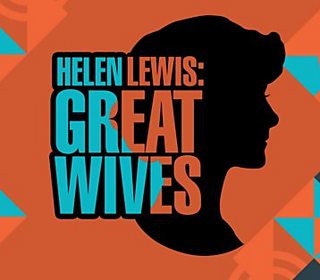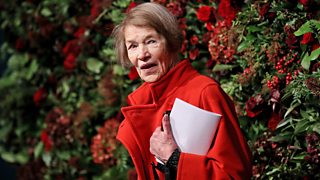Five great wives from history you need to know about
"Behind every great man is a great woman." Presumably, this saying is supposed to make women feel better about not getting enough credit for their work, a runner-up prize in a world that would not allow them to be great themselves.
Radio 4's comedy documentary series Helen Lewis: Great Wives switches our focus to the women behind history’s greats. From self-sacrificial subservient partners to intellectual partners who sharpened the minds of our generation's brightest, here are some incredible women history has overlooked.
1. Mileva Maric
Albert Einstein and his wife Mileva Maric were intellectual, as well as romantic, partners. When Albert told his mother that he wanted to marry Mileva, she replied: "Like you, she is a book. But you ought to have a wife". Mileva was his sounding board; she proofread his work and is thought to have helped with the calculations. In a 1901 letter, he wrote 'I'll be so happy and proud when we are together and can bring our work on relative motion to a successful conclusion!"
While Albert Einstein is remembered as the greatest genius of the twentieth century, we'll never know the likely genius of Mileva Maric.
However, by the time Albert published his revolutionary work on the theory of relativity, his relationship with Mileva had broken down, and she did not share in his triumph. He became very dismissive of women's intelligence, practically disowned their daughter, who was born before they married and made Mileva sign a contract detailing her wifely duties. These included cooking, doing his laundry and only speaking to him when necessary. When Einstein left for America to escape the Nazis, Mileva stayed behind in Europe, where she died in 1948. So while Albert Einstein is remembered as the greatest genius of the twentieth century, we'll never know the likely genius of Mileva Maric.

Einstein - but not the one you're thinking of
How much did Einstein's first wife Mileva contribute to his discoveries?
2. Marie Curie

Marie Curie is often considered a success story among women scientists of the twentieth century, but she nearly didn't get cited on her first Nobel prize—her husband Pierre had to write and ask for her to be included. She even struggled to get a university position. She only became a full professor in Paris when her husband Pierre died, and the university gave her the chair that had been endowed for him.
In a biography of her mother, the Curies' younger daughter, Eve, wrote that "Pierre's existence tended toward one ideal only, to engage in scientific research at the side of the beloved woman who also lived for scientific research. Marie's was a harder life because to the obsession of work was added the humble and tiring tasks of womankind." After Pierre died, Marie raised their two daughters alone. She was the first person to win two Nobel Prizes, and she remains the only person to win in two different fields: chemistry and physics.
3. Elizabeth Siddal
You are far more likely to have seen a picture of Elizabeth Siddal than one by her. Despite being an artist herself, Siddal is best known as the Pre-Raphaelites' favourite muse, her figure immortalised in John Everett Millais's Ophelia painting. Siddal spent four months posing in a bathtub of tepid water for the painting, one occasion catching a chill so severe her father had to chase Millais to pay her doctors' bills.
When Siddal married Dante Gabriel Rossetti, he decided he didn't like her modelling for anyone else. Instead, he drew her thousands of times, and when she died, he was so heartbroken that he buried the manuscript of his poetry collection in the coffin alongside her—but dug them up a few years later. Elizabeth Siddal is the classic Pre-Raphaelite muse, but we will never know of her life beyond the gaze of the men who painted and drew her.

4. Sonya Tolstoy

Margaret was not the woman behind the great artist Walter Keane. She was the great artist.
In many ways, Sonya Tolstoy was a dutiful wife and supporter of her husband Leo Tolstoy, the great Russian novelist. She would copy his manuscripts by hand—no small feat for books like War and Peace and Anna Karenina—and even had a special table made so that she could continue working from bed after childbirth—she had thirteen children. However, the couple's relationship eventually broke down, and Tolstoy's contempt for his wife is evident in his 1889 novella The Kreutzer Sonata. When Tolstoy decided to renounce all his worldly goods, Sonya was left to care and provide for their children. She took over the publication of his novels and fought against the censorship of his books.
In a memoir, Sonya wrote: "I have served a genius for almost forty years. Hundreds of times, I have felt my intellectual energy stir within me, and all sorts of desires [...] and time, and again I have crushed and smothered all these longings. Everyone asks: 'But why should a worthless woman like you need an intellectual or artistic life? To this question, I can only reply: "I don't know, but eternally suppressing it to serve a genius is a great misfortune'."
5. Margaret Keane
Walter Keane was one of the most recognised artists of the 1960s, best known for the Big Eyes paintings—haunting portraits of children with large, sad eyes. According to Walter, these paintings captivated the woman who was to become his second wife, Margaret.
However, in 1970, five years after their marriage ended, Margaret made the extraordinary claim that she was the person responsible for the famous paintings. Walter, of course, denied this, but the matter was settled in court when the judge challenged them both to paint a Big Eyes portrait. Margaret finished her painting in 53 minutes; Walter said he couldn't paint because of a shoulder injury. Unsurprisingly, Margaret won the case. She was not the woman behind the great artist Walter Keane. She was the great artist.
To learn more, listen to Helen Lewis: Great Wives on Βι¶ΉΤΌΕΔ Sounds
More from Radio 4
-
![]()
Helen Lewis: Great Wives
Helen Lewis meets the life partners of history's most famous geniuses.
-
![]()
Write Her Story
Double Oscar-winning actress Glenda Jackson asks, where are the strong stories for women?
-
![]()
Woman's Hour
Women's voices and women's lives - topical conversations to inform, challenge and inspire.
-
![]()
Radio 4 in Four
What can you do in 4 minutes? Feed your curiosity and learn cool stuff with Radio 4 in Four.





